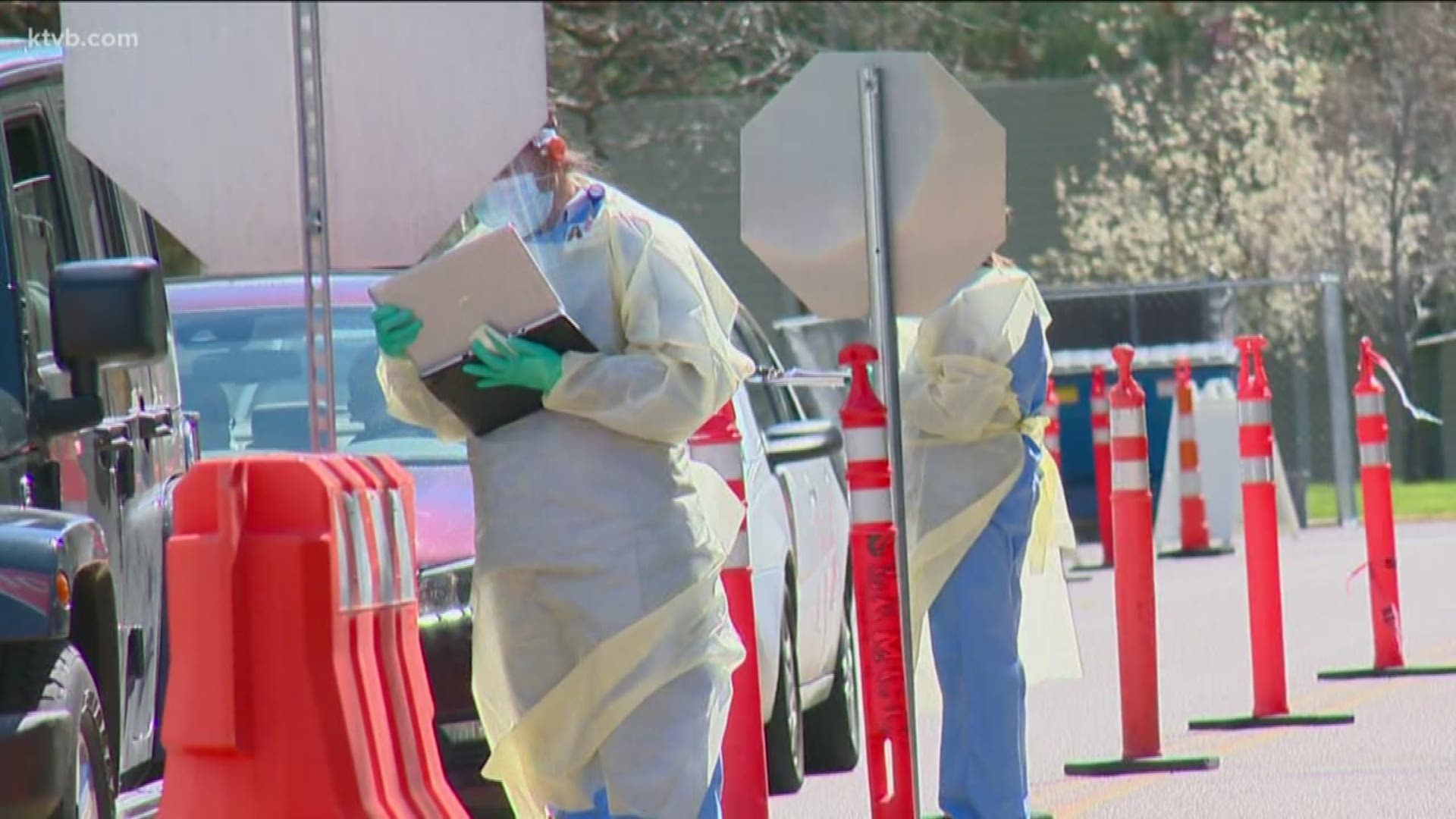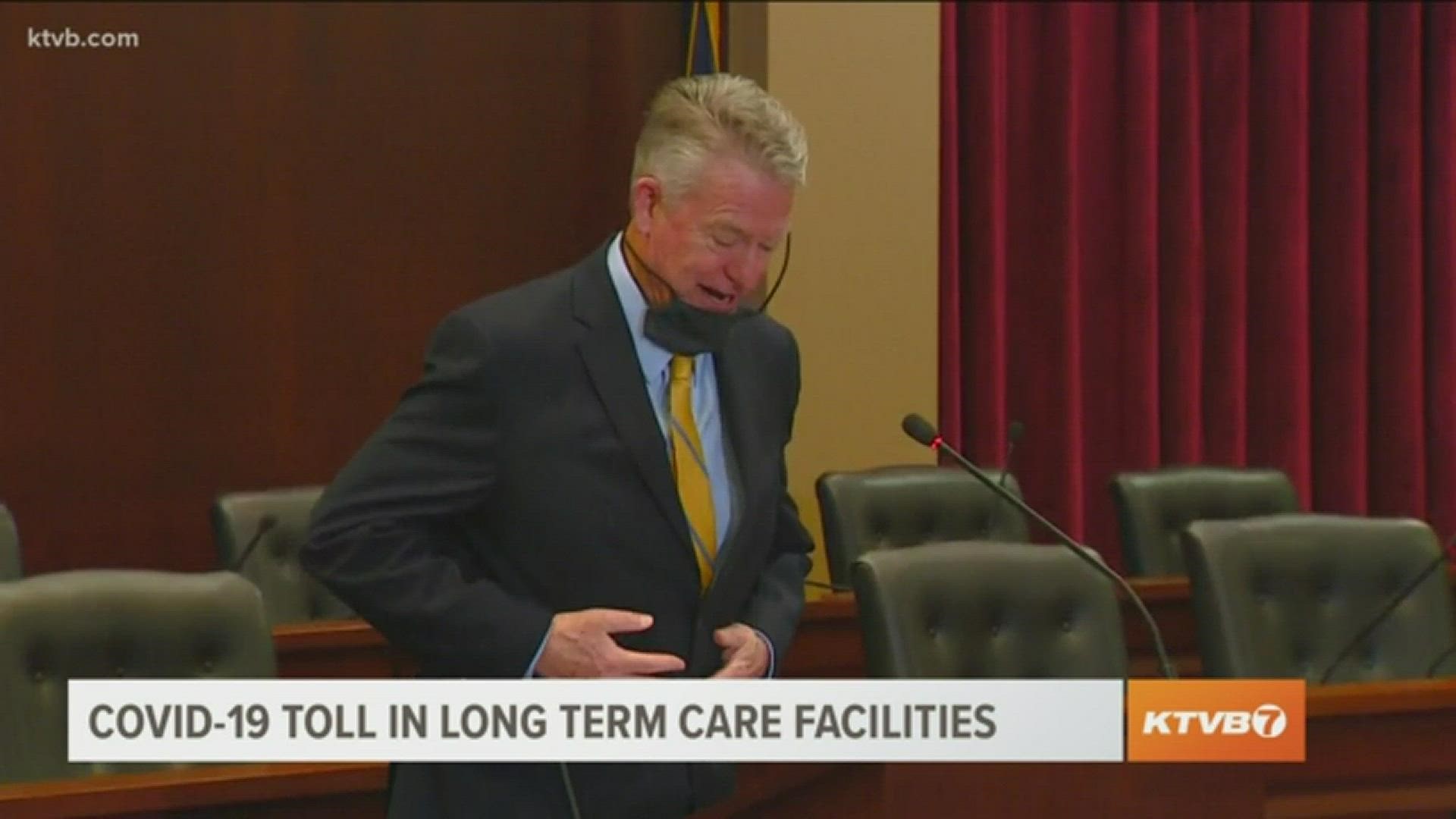BOISE, Idaho — Gov. Brad Little and health officials laid out Idaho's plan to ramp up coronavirus testing and make sure supplies and tests are getting to the people and areas where they are most needed.
Friday's press conference aligns with the release of a report by the state's coronavirus task force on how to tackle the outbreak moving forward.
Idaho Department of Health and Welfare public health administrator Elke Shaw-Tulloch warned that testing itself is not "a stand-alone solution," and must be coupled with contact tracing, physical distancing and personal hygiene to be effective.
Dr. Christopher Ball, the IDHW bureau chief and laboratory director of the Idaho Bureau of Laboratories, called the testing demands for COVID-19 "unprecedented," but said there is some good news: By early May, the state's testing capacity was 7,500 per week, and that could increase to the ability to handle 23,000 tests per week, barring unforeseen problems.
Idaho COVID-19 latest: Latest news and daily updates | Map of confirmed Idaho cases | Timelines tracking case trends | Gov. Little’s plan to reopen Idaho in stages | COVID-19 resources | Testing sites | Employers hiring | Help nonprofits | Full COVID-19 coverage
Little indicated that Idaho is working to hit the federal benchmark of testing at least 2% of the state's population by the end of the year.
The task force report recommends increasing investment in local testing capacity and expanding molecular diagnostic testing, which can detect who is currently infected. The report envisioned a more limited role for antibody testing - at least for now - out of concerns that the presence of COVID-19 antibodies does not necessarily mean that person is protected from the virus.
"We will need to build incredible testing capacity, plus the ability to respond to all of those results with appropriate clinical and public health follow-up care," Ball said.
The report also categorizes Idahoans into five priority levels for testing, with Priority One being those in most urgent need of testing.
Ball said those who fall into Priority One include healthcare workers who are showing symptoms, and nursing home residents, whether they appear ill or not. The next levels of priority would include people like asymptomatic corrections staff and essential business workers, who might easily spread the disease to a large number of people, even if they do not appear sick.
Ball said some of the biggest challenges include demand for swabs and other equipment outpacing the supply, as well as making sure rural areas of Idaho have access to tests. The state is currently working to distribute supplies received from the federal government to those places.
"There are some real testing deserts in Idaho, and that's largely due to the rural and frontier nature of our state," he said. "There are many areas where there just aren't many people and there isn't a lot of local healthcare available."
Little, who has signaled that Idaho is on track to proceed into Stage Three of the state's reopening plan, stopped short of saying that life will return to normal once all restrictions are lifted.
"I would love normal this fall," he told reporters.
But it's not likely. The governor noted that a vaccine will almost certainly not be ready that quickly, and added that the coronavirus task force will not go away even after Idaho fully reopens.
He urged people to continue doing their part in practicing personal responsibility to slow the spread, and said Idaho's health officials will be poised to make changes in response to any new development.
"It's going to be a new normal," Little said. "We're going to have to continue to take this testing report that comes out today and update it."
At KTVB, we’re focusing our news coverage on the facts and not the fear around the virus. To see our full coverage, visit our coronavirus section, here: www.ktvb.com/coronavirus.
Facts not fear: More on coronavirus
See our latest updates in our YouTube playlist:


